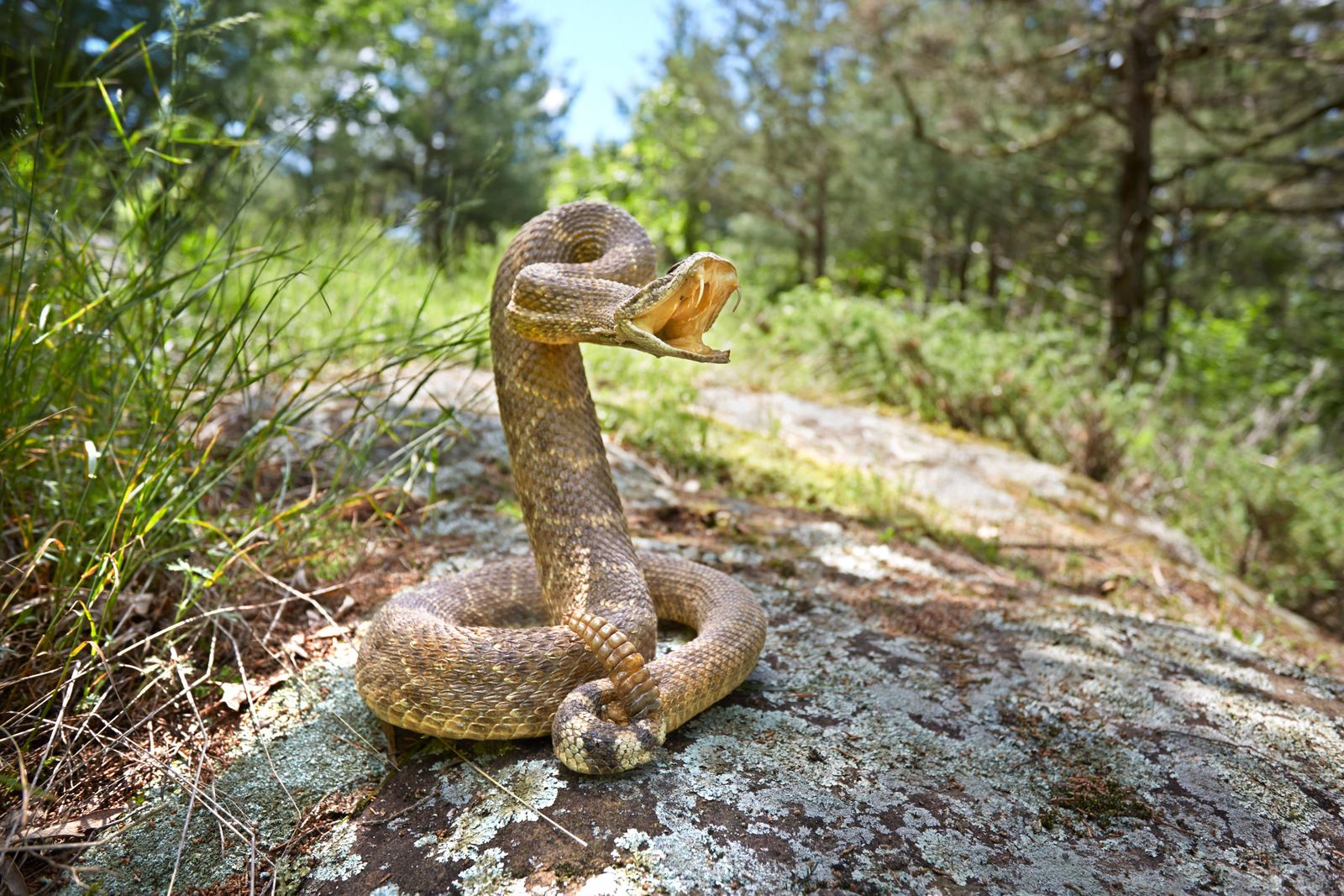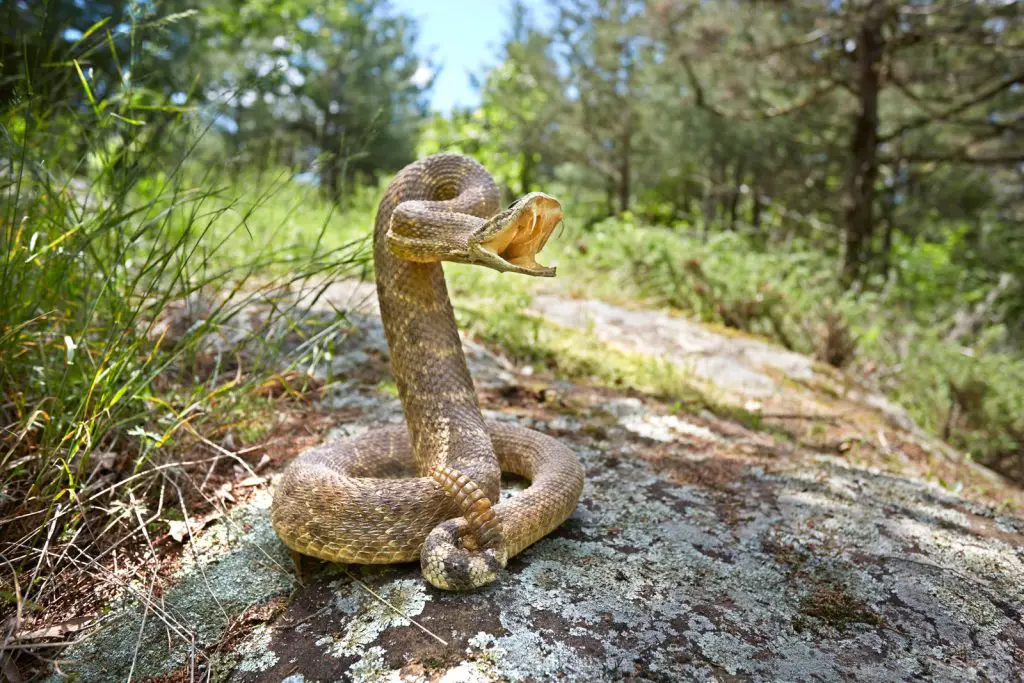Rattlesnakes have always been a topic of debate among people. Are they dangerous? Can they harm humans? Well, the answer isn’t as straightforward as you might think.
On one hand, rattlesnakes can be incredibly dangerous. With their venomous bite, they can cause serious harm to humans and animals alike. But on the other hand, they also play an important role in the ecosystem and are often misunderstood creatures. So, let’s dive deeper into the world of rattlesnakes and explore whether or not they are truly dangerous.
Rattlesnakes are highly venomous and can be dangerous if not handled properly. If bitten, seek medical attention immediately. However, rattlesnakes are also an important part of the ecosystem and play a vital role in controlling rodent populations. It’s important to respect their space and avoid disturbing them in their natural habitat.

Are Rattlesnakes Dangerous?
Rattlesnakes are venomous snakes that belong to the family of Viperidae. These snakes are known for their distinctive rattle, which they use to warn potential predators of their presence. Many people are fascinated by rattlesnakes, but they also wonder if these creatures are dangerous. In this article, we’ll explore the topic of rattlesnake safety and answer the question: are rattlesnakes dangerous?
Identifying Rattlesnakes
Rattlesnakes are found throughout North and South America and can be identified by their distinctive rattle, which is located at the end of their tail. They also have a triangular-shaped head and a thick body. Rattlesnakes come in various colors, including brown, gray, and black, and their skin has a rough texture. If you encounter a snake with these characteristics, it is likely a rattlesnake.
If you come across a rattlesnake in the wild, it is best to keep your distance. Rattlesnakes tend to be aggressive when they feel threatened, and they can strike quickly. If you or someone you know is bitten by a rattlesnake, seek medical attention immediately.
The Dangers of Rattlesnake Venom
Rattlesnake venom is a potent toxin that can cause serious health problems in humans. The venom can cause tissue damage, organ failure, and even death in severe cases. The symptoms of a rattlesnake bite include pain, swelling, and bleeding at the site of the bite. Other symptoms may include nausea, vomiting, and difficulty breathing.
If you are bitten by a rattlesnake, it is important to seek medical attention immediately. The doctor may administer antivenom to counteract the effects of the venom. However, the best way to avoid the dangers of rattlesnake venom is to avoid contact with these snakes altogether.
How to Avoid Rattlesnake Bites
The best way to avoid a rattlesnake bite is to avoid contact with these snakes. If you are hiking in an area where rattlesnakes are known to live, stay on designated trails and wear long pants and boots. Avoid putting your hands or feet in areas where you cannot see, such as under rocks or logs.
If you come across a rattlesnake, give it plenty of space and do not try to pick it up or handle it. It is also important to keep your pets on a leash when hiking in rattlesnake territory.
Rattlesnakes Vs. Other Snakes
While rattlesnakes are venomous and can be dangerous, they are not the only snakes that pose a threat to humans. Other venomous snakes include copperheads, cottonmouths, and coral snakes. These snakes can cause serious health problems if they bite a human.
However, not all snakes are venomous or dangerous. In fact, many species of snakes are harmless and play an important role in the ecosystem. These snakes help control rodent populations and are an important part of the food chain.
The Benefits of Rattlesnakes
Despite their reputation as dangerous creatures, rattlesnakes play an important role in the ecosystem. These snakes help control rodent populations, and their venom can be used to develop lifesaving drugs. In addition, rattlesnakes are a vital part of many Native American cultures and are considered sacred animals.
It is important to remember that rattlesnakes, like all creatures, have a place in the natural world. While we should be cautious when encountering them in the wild, we should also appreciate their role in the ecosystem.
Rattlesnake Safety Tips
If you live in an area where rattlesnakes are known to live, there are steps you can take to stay safe. Keep your yard free of debris, such as piles of leaves and logs, which can provide shelter for snakes. Seal any cracks or holes in your home to prevent snakes from entering.
If you encounter a rattlesnake in your yard, contact a professional wildlife removal service. Do not attempt to remove the snake yourself, as this can be dangerous.
Conclusion
In conclusion, rattlesnakes are dangerous creatures that should be approached with caution. While their venom can cause serious health problems in humans, it is important to remember that these snakes play an important role in the ecosystem. By taking steps to avoid contact with rattlesnakes and staying aware of their presence in the wild, we can coexist with these fascinating creatures.
Frequently Asked Questions
Here are some common questions about rattlesnakes and their level of danger.
What should you do if you encounter a rattlesnake?
If you come across a rattlesnake, the first thing to do is keep your distance. Rattlesnakes typically won’t attack unless they feel threatened or provoked, so try not to make sudden movements or loud noises. If you’re hiking in an area known for rattlesnakes, it’s a good idea to wear sturdy boots and watch where you step. If you do get bitten, seek medical attention immediately.
What are the symptoms of a rattlesnake bite?
The symptoms of a rattlesnake bite can vary depending on the type of snake and the amount of venom injected. Common symptoms include pain and swelling around the bite, nausea, vomiting, and difficulty breathing. In severe cases, a rattlesnake bite can cause organ damage or even death. If you suspect you’ve been bitten by a rattlesnake, seek medical attention right away.
Are all rattlesnakes venomous?
No, not all rattlesnakes are venomous. There are several species of rattlesnakes, and some are more dangerous than others. The Western Diamondback Rattlesnake and the Eastern Diamondback Rattlesnake are two of the most venomous species, while others, such as the Prairie Rattlesnake, have less potent venom. However, it’s still important to treat all rattlesnakes with caution and respect.
How can you prevent rattlesnake encounters?
One way to prevent rattlesnake encounters is to be aware of your surroundings. If you’re hiking in an area known for rattlesnakes, stay on designated trails and avoid tall grass or brush. Keep your pets on a leash, as they can easily stumble upon a hidden snake. If you live in an area with rattlesnakes, take steps to make your property less inviting to them, such as removing piles of debris or sealing off any potential entry points.
What is the best way to handle a rattlesnake?
The best way to handle a rattlesnake is to not handle it at all. If you come across a rattlesnake, give it plenty of space and let it go on its way. It’s never a good idea to try to catch or kill a rattlesnake, as this can be dangerous and is often unnecessary. If you need to have a rattlesnake removed from your property, contact a professional wildlife removal service.
The Most Venomous Rattlesnake in the World!
In conclusion, it is safe to say that rattlesnakes are indeed dangerous. Their venom can cause serious harm to humans and animals alike, and their aggressive nature can make them a threat to those who come too close. It is important to remember that, while they may be scary, rattlesnakes are an important part of the ecosystem and should be respected from a distance.
However, it is also important to note that rattlesnakes are not out to attack humans unprovoked. They will only strike if they feel threatened or cornered, so it is important to give them space and avoid disturbing them in their natural habitat. With proper education and caution, we can coexist with these fascinating creatures and appreciate their role in the environment.
Ultimately, it is up to us to take responsibility for our own safety and that of the wildlife around us. By understanding the dangers posed by rattlesnakes and taking appropriate precautions, we can enjoy the natural world while minimizing the risks. So let us respect these creatures and appreciate their beauty and power from a safe distance.


